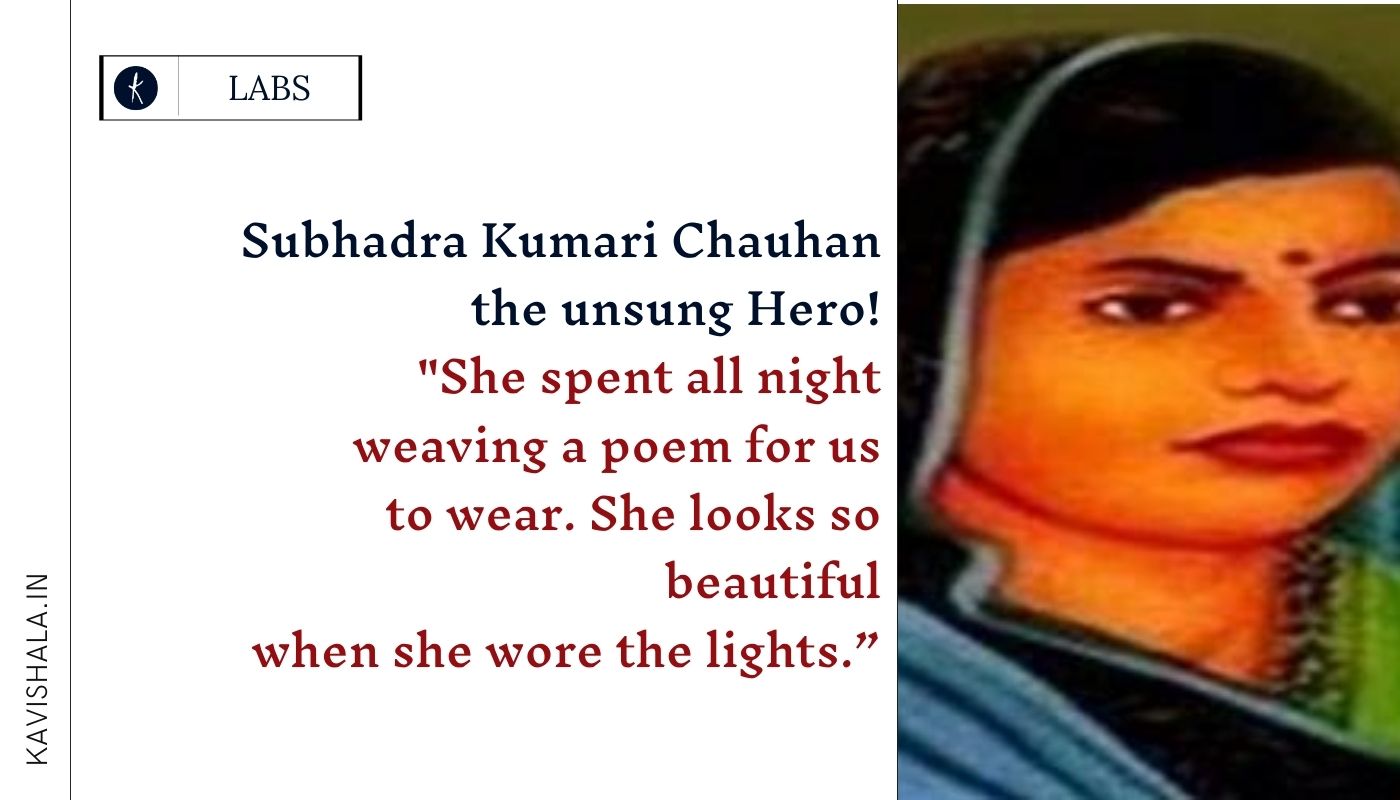
"She spent all night
weaving a poem for us
to wear. She looks so beautiful
when she wore the lights.”
Subhadra Kumari Chauhan was a “trailblazing writer and freedom fighter” who “rose to national prominence during a male-dominated era of literature”.
Ms. Chauhan was born on this day in 1904 in Nihalpur village in Uttar Pradesh’s Allahabad, now Prayagraj.
“She was mostly known to write constantly, even in the horse cart on the way to school, and her first poem was published at just nine years old. The call for Indian independence reached its height during her early adulthood. As a participant in the Indian Nationalist Movement, she used her poetry to call others to fight for their nation’s sovereignty,” Google said.
Her poetry and prose primarily focused on hardships that the Indian women overcame “such as gender and caste discrimination”.
“In 1923, Ms. Chauhan’s unyielding activism led her to become the first woman protagonist, also a member of the Indian collective of nonviolent anti-colonialists, to be arrested in the struggle for national liberation,” the internet search giant said.
As part of her contribution to the freedom struggle, Ms. Chauhan continued to make revolutionary statements on and off the page and she published a total of 88 poems and 46 short stories.
She had authored a number of popular works in Hindi poetry. Her most famous composition is Jhansi Ki Rani, an emotionally charged poem describing the life of Rani Lakshami BaiThe poem is one of the most recited and sung poems in Hindi literature. An emotionally charged description of the life of the queen of Jhansi and her participation in the revolution in 1857 it is often taught in schools of India.
A couplet repeated at the end of
